Why July 4 Can Spell Freedom for Your Body
Tomorrow will be the Fourth of July, or Independence Day in the US. It is the national day when US citizens celebrate the 1776 Declaration of Independence from Great Britain. Today I invite you to travel back in time with me to look at a well-known work of art that commemorates that historic event.
Celebrating our heritage
The artists who painted the Founding Fathers of the United States understood that they were depicting a great historic event—the birth of (by the standards of the time) a new, democratic, and free nation; what they would not have realized, is that they were also leaving its future citizens a precious record of healthy posture.
Even if you are a newcomer to the Gokhale Method, you will likely already have noticed that we frequently draw on such ancestral photographs and artworks. They capture the way people used to stand, sit, walk, and bend, and they show us the naturally healthy and time-tested postural principles that work best for our species.
The painting I’ve chosen below is John Trumbull’s 12x18ft painting of 1819, Declaration of Independence, and it hangs today in the US Capitol Rotunda in Washington. It opens a window back to the past, when the average human body had far fewer musculoskeletal problems than we suffer from in the US today, be that back pain, joint wear and tear, arthritis, plantar fasciitis, frozen shoulder, RSI… the list goes on…
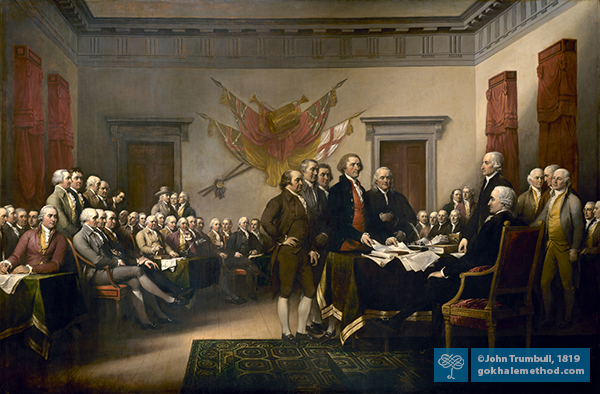
Trumbull’s painting depicts the five signatories to the Declaration. There is some artistic license, as all five men did not actually sign together. You may recognize it from the back of the US $2 bill!
This iconic and much-reproduced painting depicts the upright but relaxed bearing that was typical prior to the 1920s. From the 1920s onwards, slouching—tucking the pelvis and rounding the shoulders—became increasingly embedded in our culture, particularly in fashion and furniture design. You can read more about this problematic shift in posture in my book, 8 Steps to a Pain-Free Back.
Diving into the detail
Let’s take a closer look at the posture wisdom to be found in this famous composition:
The figures stand and sit with their behinds behind them. This is especially clear in the central figure of John Adams, who is standing hand on hip. His weight rests on his straight back leg, while the leg in front is rested and bent at the knee. Both these elements carry over naturally into healthy glidewalking.
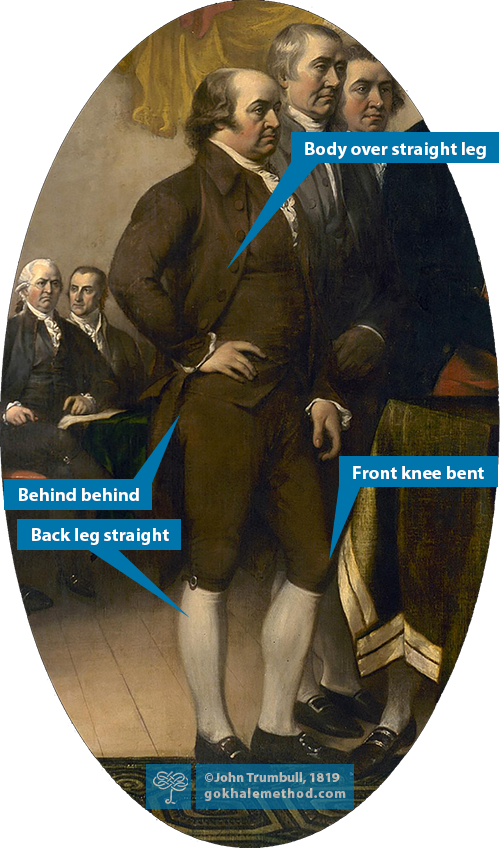
The central figure of John Adams epitomizes elegant, upright, and relaxed standing.
An important characteristic of our ancestors’ posture is that they mostly stand with their feet angled outward, rather than straight ahead, as is regarded as ideal today. This helps to externally rotate the entire leg, and in combination with well-toned glutes, facilitates the pelvis to settle in a healthy anteverted position. You can see how the knees track out slightly, in line with the feet:
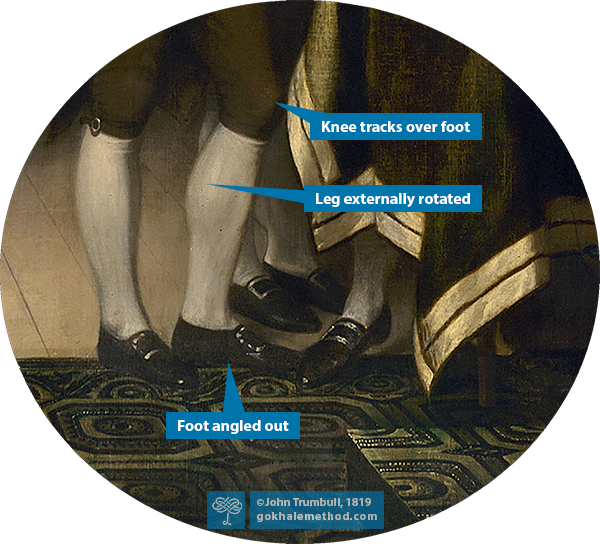
You will find this external rotation of the foot and leg in most nineteenth or early twentieth century photographs, sculptures, drawings, or paintings.
In the upper body, these figures have the broad, open chest that goes with relaxed, posterior shoulders. This facilitates better breathing, and healthy, mobile but stable shoulder joints.
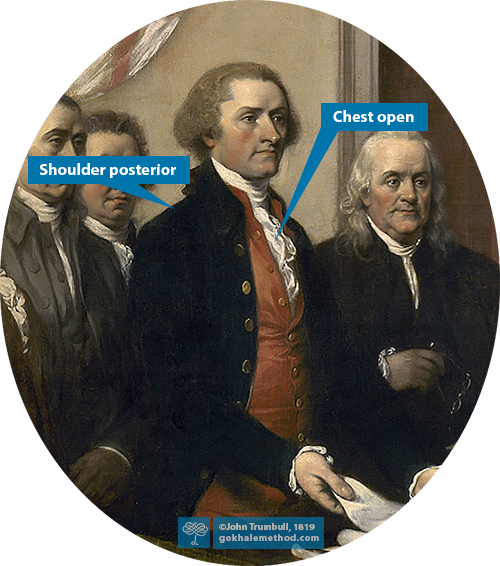
The shoulders of Thomas Jefferson stay “home” while he holds forward documents of the Declaration.
Their necks remain tall and upright, aligning their heads directly over their body, rather than cantilevered forward. This avoids compression and wear and tear on the cervical discs and vertebrae, and pinching of the nerves:
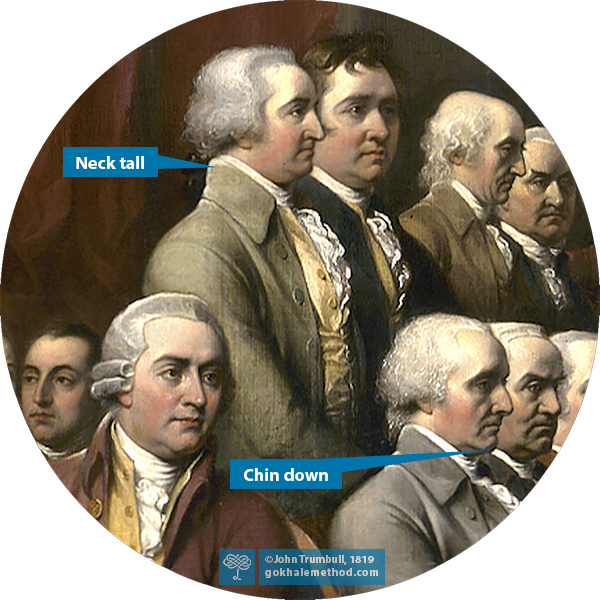
None of these figures have the forward head carriage that is so common in current times.
Best next action steps
If you would like help in rediscovering your healthy postural heritage, get started by booking a consultation, online or in person, with one of our teachers.
You can sign up below to join any one of our upcoming FREE Online Workshops…

Comments
Unlike other dry, boring …
Unlike other dry, boring physical programs talking about exercises that are very uninspiring, the Gokhale Method uses images to further elucidate the simple concepts. The body is a perfectly logical machine, and the Gokhale Method theoretically shows you how to put your skeletal system in proper alignment so that your muscles can do the work with proper body mechanics.
I’m strictly here for the images for inspiration so thank you for this article. As Alice said, “What good is a book if there aren’t any pictures in it?”
I’m looking forward to the new addition of your book hoping there will be many more images.
Add New Comment
Login to add commment
Login